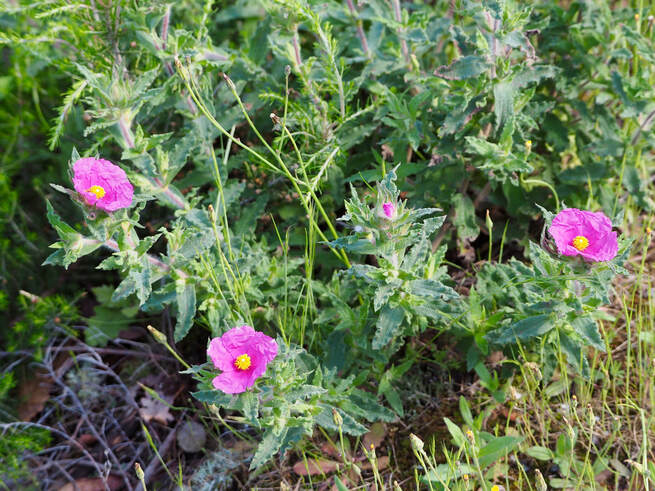by Robin Noble
In recent years, the contribution to overall knowledge, especially of the natural world, made by “Citizen Science”, has frequently been emphasised in magazines and books. This refers to the value of regular observations, made through time, of appearances or changes in our wildlife, collected by any of us and properly recorded. During this year, which for most of us has been notable for its disruption, we have learnt that gaps in such observations can be equally interesting...
The combination of Covid-19, and moving to, and renovating, a house elsewhere, has meant that Martine and I have been away from France for thirteen months. We managed to arrive here just in time for lockdown, so most of our observations have been in, or from, the garden; (more of a jungle after such a long absence!).
The mostly-blue skies above us have been pretty quiet, apart from the occasional mewing of a buzzard, or shrieking of a jay. The little birds around us have, however, kept on calling: the wagtails and young black redstarts on the roofs below our house are nearly always evident, as are the robins and blackbirds among all the overgrown bushes. The hedges still harbour the almost invisible warblers; the blackcap to one side, and the Sardinian to the other, although what sound like bad-tempered outbursts may indicate some arguments over these neat territories. The big pines are still visited by tits; these have included long-tails and cresties, while a tree-creeper has thoroughly investigated all the crevices in the red bark...(just as a nuthatch did while I was writing these words!).
So much, you may say, is normal; reassuringly normal in fact. But the garden itself is showing up some fundamental changes. We now have moss growing in what used to be hard bare ground or sparse, seasonal grass. Some tiny ferns, which used to grow a couple of inches and then wilt, are several times that size, and spreading. A sort of tree fern, parked in a pot which faces both south and west, is doing well, while in previous years it would certainly have died without watering. While all this just shows that this year has been wetter than normal, it reinforces the message that overall, our climates are changing; they tend to be more unstable, more humid, more given to heavy rainfall. That the River Tech has experienced at least one dramatic spate in the last year was made clear on my “regulation” walk last Sunday, when I walked to a bathing-pool upstream from where we live in Reynes. There used to be a gentle, small sand beach leading down to the calm and inviting pool, but the two are now severed by a new, massive slope of rounded boulders, which would make access for bathing significantly more difficult than it used to be.
And the garden has revealed an aspect of plant “behaviour” which I had not fully grasped.
Our garden has a sort of rather wilder fringe, below the pines and behind the tidier bushes and internal hedges. For part of the year, this has tended to be bare ground, into which various plants have seeded. Most of them are horribly thorny, but one is not. This is a cistus or rock rose, the type with soft grey-green leaves and pretty pink, calico-like flowers, which grows wild on the hills behind us; it is, I think, Cistus albidus. There was none in our garden when we arrived some eight years ago; then it appeared in one corner of the wilder zone. It seeds prolifically and has spread westwards, but it is now dying out where it first emerged (despite the higher rainfall), failing a bit in the area it next took over, and doing well in a totally new bed where it had just arrived a year ago. Short-lived, therefore, and seeding prolifically, rapidly colonising new areas; these are, when you think about it, ideal characteristics for a plant growing in an area accustomed both to great summer heat and dryness, and to fire.
Interesting?!
